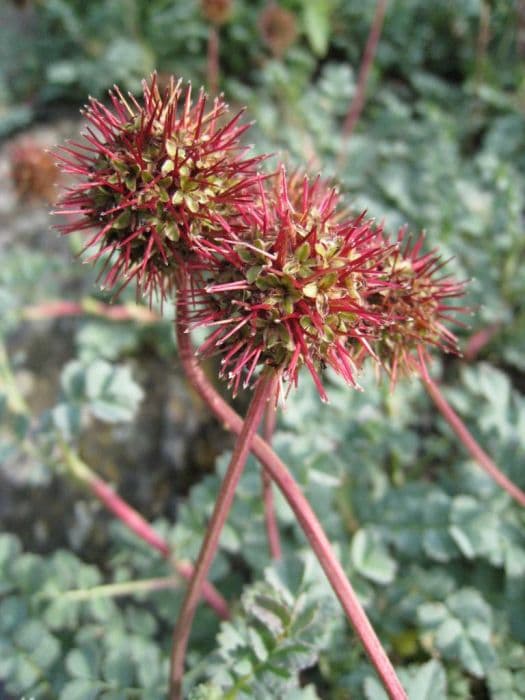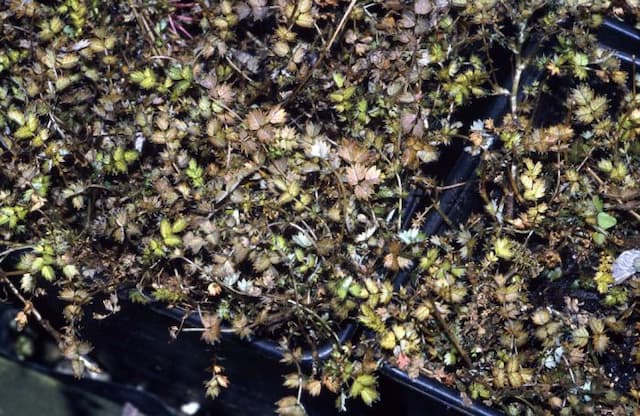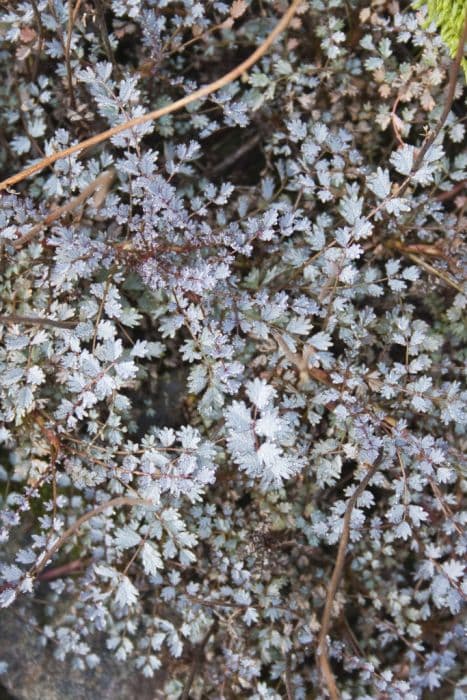Yoshino cherry Prunus × yedoensis 'Ivensii'

ABOUT
Prunus × yedoensis 'Ivensii', commonly known as the Yoshino cherry, is a stunning ornamental tree that is celebrated for its delightful and abundant spring blossoms. The tree's appearance is marked by an elegant and graceful branching structure that culminates in a beautiful floral display. During its blooming period, the Yoshino cherry becomes a radiant cloud of soft pink or white flowers, with each individual blossom containing five delicate petals arranged in a cup-like shape. These petals are soft to the touch, with a velvety texture and a subtle fragrance that can add a sweet, gentle aroma to the surroundings. Before the flowers emerge, the tree showcases small flower buds that start as a deep pink color and gradually lighten as they prepare to open. Alongside the floral spectacle, the Yoshino cherry produces simple, ovate leaves that emerge with a reddish-bronze color, maturing into a fresh, glossy green as the season progresses. In the autumn, this green foliage subtly transitions to yellow, providing a muted yet picturesque display of fall color before the leaves drop. The Yoshino cherry's bark adds additional visual interest throughout the year, with a bark that is smooth and a glossy gray-brown, sometimes marked with horizontal lenticels which are natural structures that give the trunk a distinctive appearance. The combination of its showy blooms, attractive foliage, and bark makes the Yoshino cherry a beloved feature in landscapes and gardens where it symbolizes the arrival of spring and ephemeral beauty.
About this plant
 Names
NamesFamily
Rosaceae
Synonyms
Yoshino Cherry, Tokyo Cherry
Common names
Prunus × yedoensis 'Ivensii'.
 Toxicity
ToxicityTo humans
The plant commonly known as Yoshino cherry can be toxic to humans if certain parts are ingested. The seeds, leaves, and stems contain cyanogenic glycosides, which can release cyanide when chewed or digested. Symptoms of poisoning may include difficulty breathing, weakness, headache, dizziness, confusion, increased heart rate, and convulsions. In severe cases, poisoning can lead to coma or death if not treated promptly. It is advisable to avoid ingesting any part of the Yoshino cherry tree, particularly the seeds.
To pets
The Yoshino cherry plant is also toxic to pets such as dogs and cats. Like in humans, the seeds, leaves, and stems contain cyanogenic glycosides that can turn into cyanide when ingested. Symptoms in pets can include panting, dilated pupils, difficulty breathing, and shock, with the potential to lead to coma or death in severe cases. Pet owners should prevent their animals from eating any part of the Yoshino cherry tree.
 Characteristics
CharacteristicsLife cycle
Perennials
Foliage type
Deciduous
Color of leaves
Green
Flower color
White
Height
20-30 feet (6-9 meters)
Spread
20-30 feet (6-9 meters)
Plant type
Tree
Hardiness zones
5-8
Native area
Japan
Benefits
 General Benefits
General Benefits- Aesthetic Appeal: This variety of cherry blossom tree is admired for its beautiful white to pale pink flowers that create a stunning and ethereal canopy when in bloom, enhancing the visual appeal of any landscape.
- Seasonal Interest: It provides a striking display of spring blooms, and in the fall, the leaves often change color, adding seasonal variety to gardens and parks.
- Shade Provider: As a medium-sized tree, it can offer shade in summer, creating comfortable outdoor spaces for relaxation and activities.
- Habitat for Wildlife: The tree can attract pollinators, such as bees and butterflies during its flowering season, supporting local ecosystems.
- Cultural Significance: Symbolizing renewal and the ephemeral nature of life, its blossoms hold deep cultural significance, especially in Japan, adding a layer of cultural value to the spaces where it is planted.
- Urban Tolerance: Prunus × yedoensis 'Ivensii' is relatively tolerant of urban conditions, making it suitable for cityscapes, parks, and street plantings.
 Medical Properties
Medical Properties- This plant is not used for medical purposes.
 Air-purifying Qualities
Air-purifying QualitiesThis plant is not specifically known for air purifying qualities.
 Other Uses
Other Uses- Ornamental Wood: The wood of the Yoshino cherry tree can be used in woodworking for decorative items due to its fine grain and potential beautiful patina.
- Photography Backdrop: The Yoshino cherry’s stunning blossoms are often used as a photogenic backdrop for portraits, weddings, and other photography sessions.
- Cultural Symbolism: This tree is prized for its symbolic representation of life and renewal, especially in Japanese culture, and is often involved in related festivals or art.
- Landscape Design: Landscape architects may utilize the Yoshino cherry as a focal point in garden design due to its size, shape, and seasonal color changes.
- Bonsai: The Yoshino cherry can be cultivated as a bonsai tree, offering an artistic miniature representation for enthusiasts and collectors.
- Urban Greening: Planted in cities, the Yoshino cherry can help to create green spaces, contributing to urban beautification and providing a natural contrast to the built environment.
- Educational Tool: This species can be used in educational settings such as botanical gardens to teach about plant life cycles, particularly the spectacular transition from buds to full blossom.
- Culinary Display: Though not typically associated with food, the blossoms can be a delicate garnish for special dishes in high-end cuisine for a touch of elegance and color.
- Wildlife Support: The tree provides habitat and food for certain birds and insects, especially during the bloom period when nectar is abundant.
- Ink Production: The blossoms are sometimes used to produce natural dyes for fabrics and inks for traditional calligraphy and art.
Interesting Facts
 Feng Shui
Feng ShuiThe Yoshino cherry is not used in Feng Shui practice.
 Zodiac Sign Compitability
Zodiac Sign CompitabilityThe Yoshino cherry is not used in astrology practice.
 Plant Symbolism
Plant Symbolism- Beauty: Prunus × yedoensis 'Ivensii', commonly known as the Yoshino cherry, epitomizes beauty with its delicate, pale pink blossoms.
- Transience: The brief blooming period of the Yoshino cherry is a reminder of the fleeting nature of life, echoing the concept of transient beauty.
- Renewal: As a herald of spring, the Yoshino cherry's blooming is symbolic of rebirth and new beginnings.
- Purity: The color and clarity of the cherry blossom can represent innocence and purity.
- Good Fortune: In some cultures, the Yoshino cherry is a symbol of luck and prosperity.
- Love and Affection: Cherry blossoms are often associated with the emotional depth of love and the beauty of affection.
- Friendship: In international contexts, particularly between Japan and other countries, the Yoshino cherry is a symbol of goodwill and friendship.
 Water
WaterThe Yoshino cherry should be watered deeply once a week, providing about 1.5 inches of water which is roughly equivalent to 5 gallons for young trees, and up to 15 gallons for mature trees. During hot, dry periods, watering frequency should be increased to twice a week. Ensure that the water penetrates deeply into the soil to encourage deeper root growth. Overhead watering should be avoided to prevent leaf diseases; instead, use a soaker hose or drip irrigation system around the base of the tree. In the winter, reduce watering since the tree will require less moisture due to dormancy.
 Light
LightThe Yoshino cherry thrives in full sunlight, requiring at least 6 hours of direct, unfiltered sunlight each day. The ideal spot would be an open area away from taller structures or trees that might cast shade. These cherry trees also tolerate partial shade, but bloom best when planted in a sunny location.
 Temperature
TemperatureThe Yoshino cherry prefers a temperate climate and can tolerate temperatures as low as -20 to -10 degrees Fahrenheit in winter and as high as 90 degrees Fahrenheit in summer. The ideal temperature range is between 60 and 75 degrees Fahrenheit. These trees may struggle in extreme heat or cold, so providing a location with some protection from harsh conditions can be beneficial.
 Pruning
PruningPrune the Yoshino cherry to shape it, remove dead or damaged branches, and encourage healthy growth. Pruning is best performed in late winter or early spring before the sap starts to flow. Thinning out dense branches allows light and air to penetrate the canopy, which can reduce disease risks. Pruning should be done sparingly, as these trees do not require heavy cutting back.
 Cleaning
CleaningAs needed
 Soil
SoilThe Yoshino cherry prefers a well-draining soil with a mix of loam and organic matter. The ideal pH for this plant is between 5.5 and 6.5. A mixture of two parts loam, one part peat moss or compost, and one part sand or perlite will provide the proper drainage and nutrition for the Yoshino cherry.
 Repotting
RepottingYoshino cherry trees do not typically require repotting as they are usually grown outdoors. However, if grown in containers, young trees may need repotting every 2 to 3 years to prevent root-bound conditions and to renew the soil.
 Humidity & Misting
Humidity & MistingYoshino cherry trees are tolerant of a wide range of humidity levels but prefer moderate humidity. They thrive outdoors where the humidity is natural and do not require specific humidity control measures.
 Suitable locations
Suitable locationsIndoor
Not suitable for indoor growth.
Outdoor
Plant in well-draining soil; full sun; ample space to grow.
Hardiness zone
5-8 USDA
 Life cycle
Life cyclePrunus × yedoensis 'Ivensii', commonly known as the Yoshino cherry, begins its life cycle as a seed which, when planted in fertile soil and exposed to the necessary chilling requirements, will germinate and grow roots as well as a shoot that emerges from the soil as a seedling. Over several years, the seedling grows into a juvenile tree, developing a stronger root system and woody stem with branches; during this stage, the focus is on vegetative growth rather than reproduction. As the tree matures into its adult phase, it starts to produce buds that will turn into flowers and leaves every spring; this is when the Yoshino cherry is most notably recognized for its ornamental value, with its stunning white or pale pink blossoms. Following pollination, typically by insects attracted to its flowers, the tree will set fruit in the form of small cherries, which contain the seeds necessary for the next generation, although these fruits are generally not palatable to humans. The adult tree will enter a reproductive cycle annually, blooming in the spring followed by seed set, and may live for decades if provided with suitable environmental conditions and care. This tree will ultimately reach its senescent phase when growth and reproductive capabilities decline, eventually resulting in the tree's death.
 Propogation
PropogationPropogation time
Early Spring
The Yoshino cherry (Prunus × yedoensis 'Ivensii') is most commonly propagated through grafting. Grafting is usually performed in late winter or early spring before the tree starts actively growing. In this method, a scion, which is a young shoot or twig from the desired Yoshino cherry tree, is precisely cut and joined onto the rootstock of another cherry species. The cut area is then securely wrapped to promote the fusion of the scion's and rootstock's tissues. Through grafting, the resulting tree inherits the characteristics of the Yoshino cherry, including its beautiful spring blossoms, while benefitting from the rootstock's hardiness and adaptability. This technique requires skill and careful handling to ensure successful growth and development of the grafted tree.









